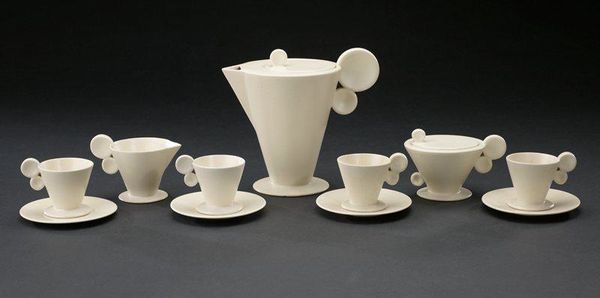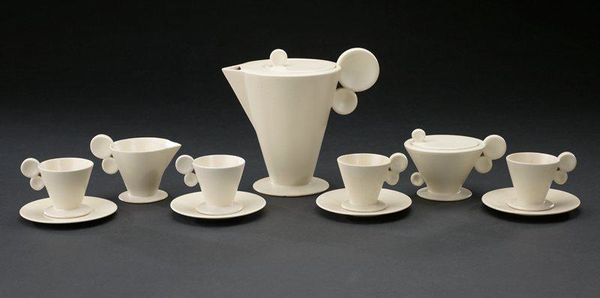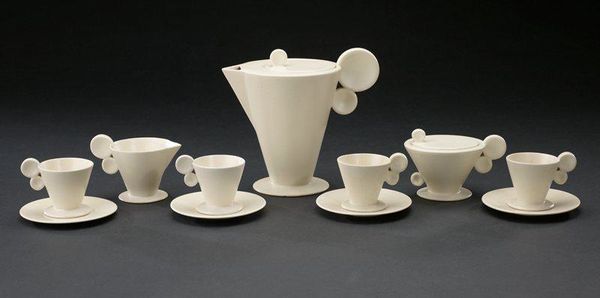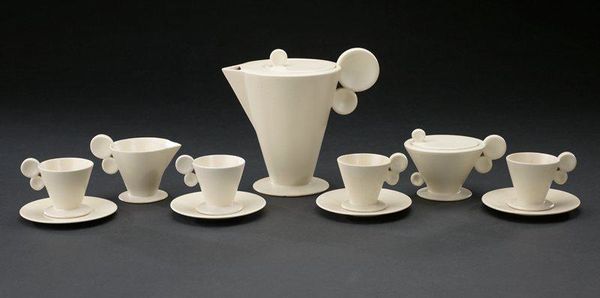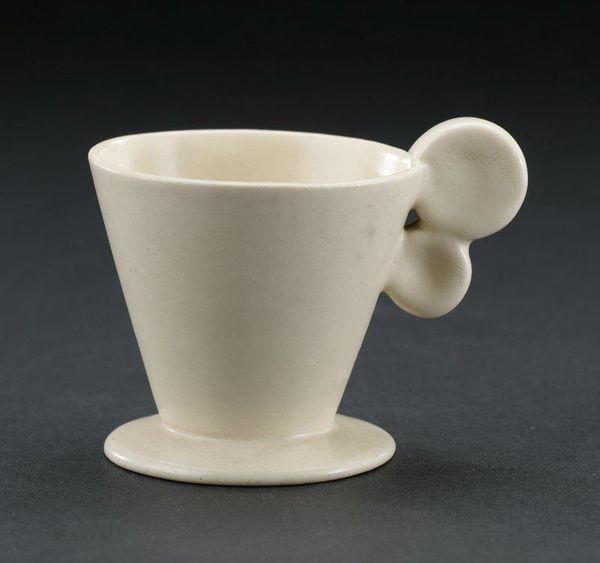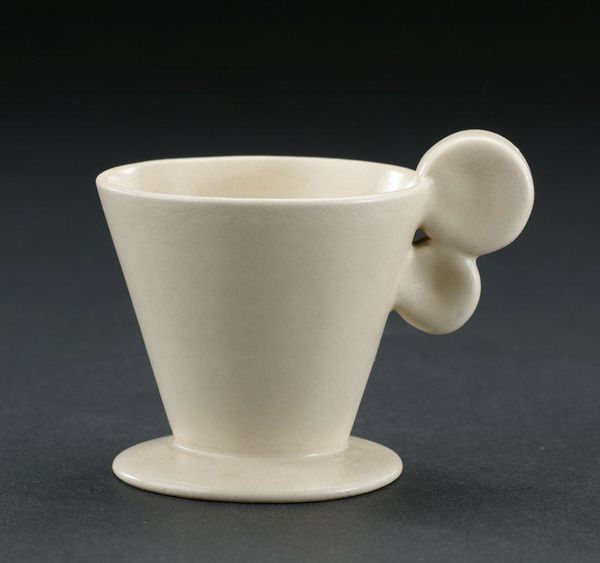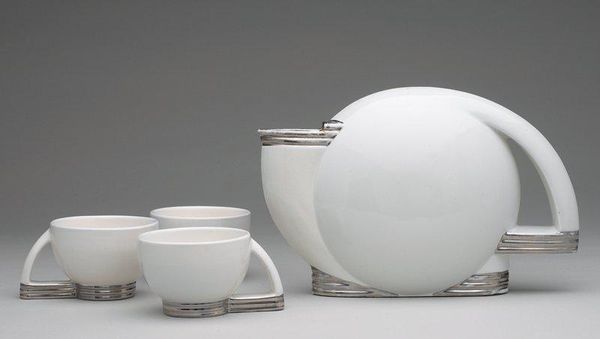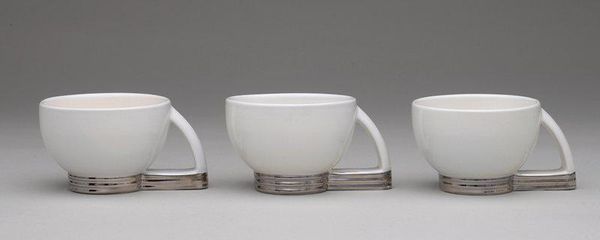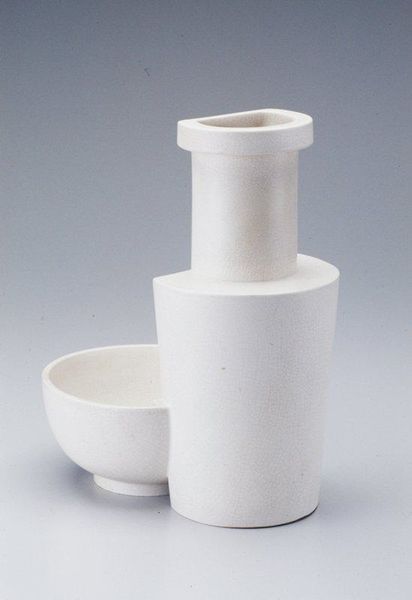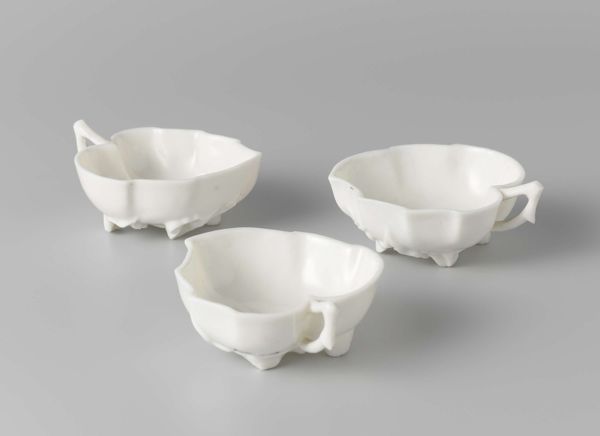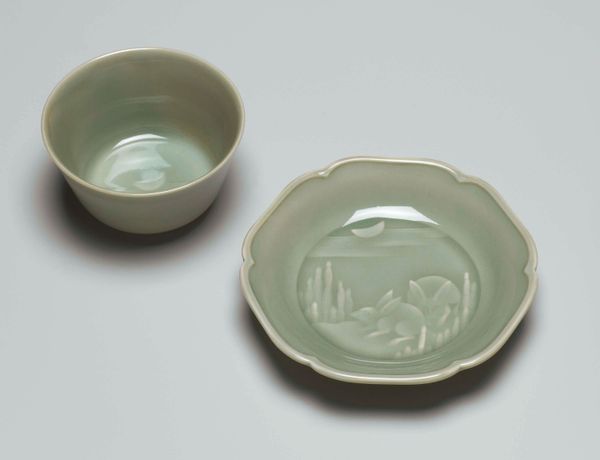
Cup and saucer from a tea service c. 1928
0:00
0:00
ceramic
#
ceramic
#
geometric
#
bauhaus
#
modernism
Dimensions: 2 3/8 x 2 3/8 x 3 1/8 in. (6.03 x 6.03 x 7.94 cm) (cup)
Copyright: No Known Copyright
Curator: Immediately striking. A clinical, almost alien aesthetic pervades this "Cup and Saucer from a Tea Service," doesn't it? The material's uniformity... intriguing. Editor: It does have a starkness. The color is almost unsettlingly pure. Are those handles, though? They look like planetary bodies orbiting a strange, little ceramic sun. It’s c. 1928. Margarete Heymann-Marks Löbenstein is the artist, working in ceramic with the aesthetic of Bauhaus modernism. Curator: Precisely! The Bauhaus ethos prized the functional object, stripping away ornament to reveal pure geometric form. Observe the conical shapes, the cylindrical bases. Function dictates form, without extraneous decorative details. It challenges our understanding of what it means to “decorate”. Editor: But the handle detail softens that pure utility, almost undermining it. Circles are frequently understood as feminine symbols... It gives it a delicate humanism which, while minimal, still references cultural memory. We use curved, comforting shapes every day! Curator: Ah, but consider the placement. The circular "planets" bisected, disrupted by the cup's very geometry. A tension is created. The spheres contrast with the severely angled body. One cannot deny the visual tension and rhythm established through that dynamic alone! Editor: Indeed! But there's something deeper here, I think. Beyond sheer utility and geometry, this echoes our fascination with modernity—the sterile beauty of machines, yet a lingering desire for comfort and familiarity. And I also notice the absence of color heightens the drama. The bright white makes the stark geometry all the more immediate! Curator: White is an integral piece here. It highlights form through stark contrast of light and shadow. In regards to visual effect alone, it simplifies the construction and highlights the objective qualities. We’re asked to perceive structure first and foremost. Editor: So, we might see this tea set as not only a celebration of pure form, but a dialogue between it and the very human desires that seek expression, even in something as fundamental as the handle of a cup. Curator: Yes, form versus the lingering human need to find meaning! A delicious complexity in such restrained geometry!
Comments
No comments
Be the first to comment and join the conversation on the ultimate creative platform.
